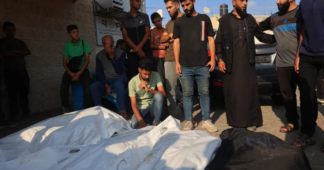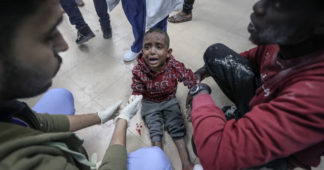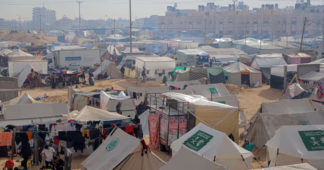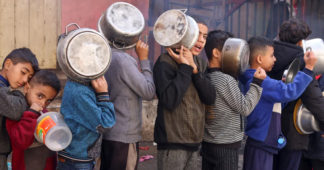Scientists are closing in on the true, horrifying scale of death and disease in Gaza
By Devi Sridhar
Sep 5, 2024
In August, a 10-month-old baby in Gaza was partly paralysed from polio, the first confirmed case there in 25 years. The paralysis is probably permanent, and there are no treatments for polio. We have a safe and effective vaccine to prevent serious disease, but the ongoing war in the region has meant vaccination campaigns have stopped. A polio outbreak seems inevitable given that the disease spreads through dirty water and rubbish, which surrounds those living in tents in camps.
Fortunately, a series of nine-hour pauses over sequential days has been agreed so that children can be vaccinated as part of an emergency UN health campaign. The first of these three-day periods concluded on Tuesday; the next will continue to the end of the week. But whether the fighting will stop completely is a major worry: Israeli forces have attacked hospitals, schools, aid trucks and UN workers in the past. UN agencies like the World Food Programme are no longer sending staff into Gaza after Israeli forces opened fire on a marked World Food Programme truck – even after the vehicle had received clearances from Israeli authorities. It’s all very well agreeing a pause on paper; the true test will be whether it is honoured in real life.
The discovery of polio in Gaza reminds us that it’s becoming increasingly difficult to assess the true cost of the war. We don’t have a sense of how widespread disease and starvation are – so called “indirect deaths” – and we are in the dark in terms of total number of deaths. Usually, data is collected from hospitals and morgues, which certify each death and notify the health ministry. Yet these civil registration systems have broken down in Gaza, meaning there is no accurate data on how many deaths have occurred. The health ministry has been trying to put together figures using media reports, which isn’t a reliable way to capture the full picture. It is estimated that there are more than 10,000 bodies buried under rubble still (meaning they can’t be counted), as well as a rising number of unidentifiable bodies.
Having some kind of accepted and reliable process for estimating the true number of deaths from afar is important. For several decades, methods have been developed to build up datasets in situations with poor or damaged health and monitoring systems: the Global Burden of Disease study, funded by the Bill & Melinda Gates Foundation, is the gold standard here. The goal is to create a process to estimate deaths, and then triangulate across research groups and various methods to see whether a robust, universally accepted number can be agreed upon. This is a process of peer review and consultation among scientists.
The Lancet medical journal recently published an estimate of deaths in Gaza from several respected scientists, who outline their process of estimation (comparison with similar conflicts) and final numbers. They estimate that about 186,000 total deaths could be attributable to the current conflict in Gaza, which is roughly 7.9% of its population, by mid-June 2024. This high number is despite various ceasefire agreements over the past six months. If deaths continue at this rate – about 23,000 a month – there would be an additional 149,500 deaths by the end of the year, some six and half months from the initial mid-June estimate. Using the method, the total deaths since the conflict began would be estimated at about 335,500 in total.
Continue reading at www.theguardian.com
We remind our readers that publication of articles on our site does not mean that we agree with what is written. Our policy is to publish anything which we consider of interest, so as to assist our readers in forming their opinions. Sometimes we even publish articles with which we totally disagree, since we believe it is important for our readers to be informed on as wide a spectrum of views as possible.











